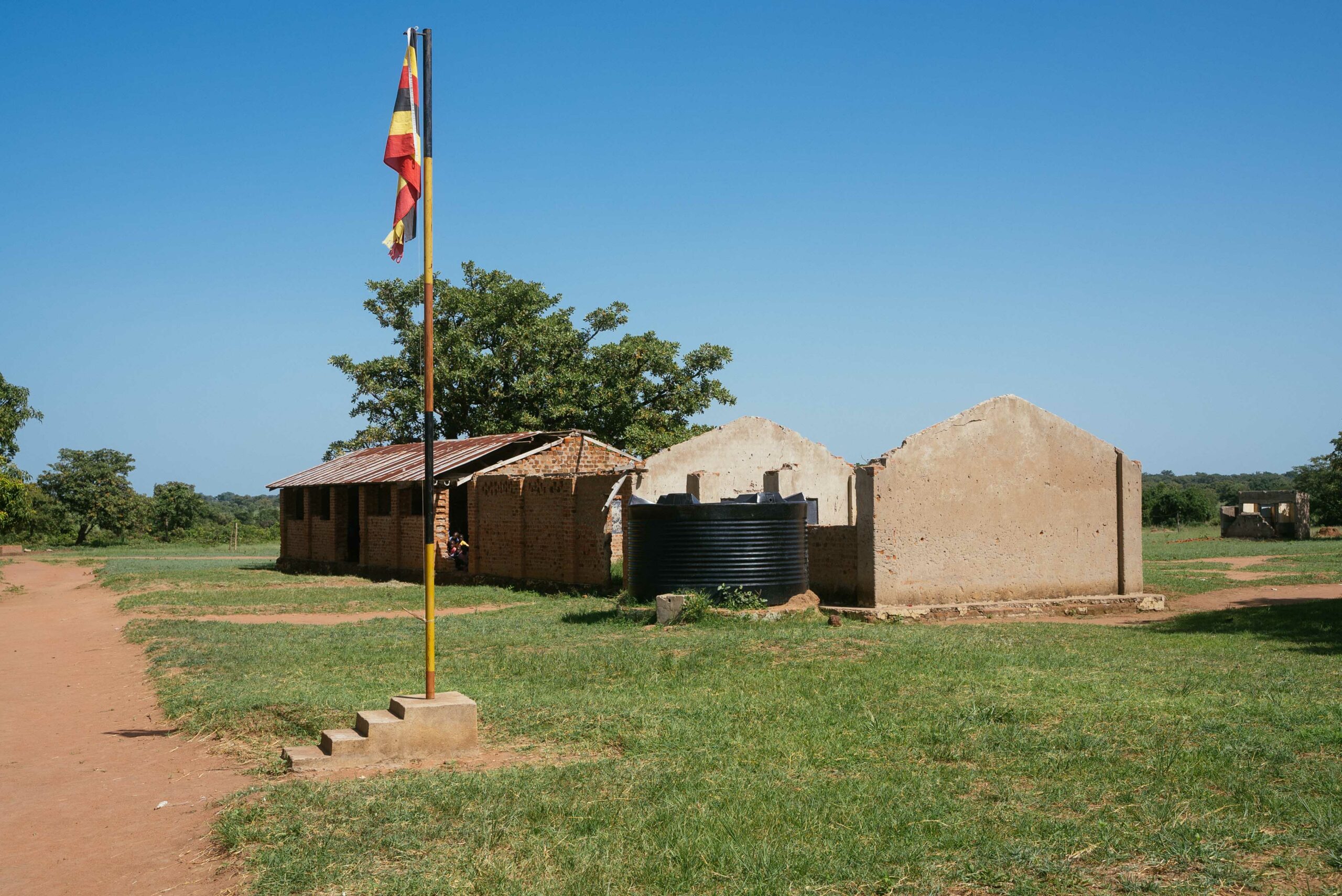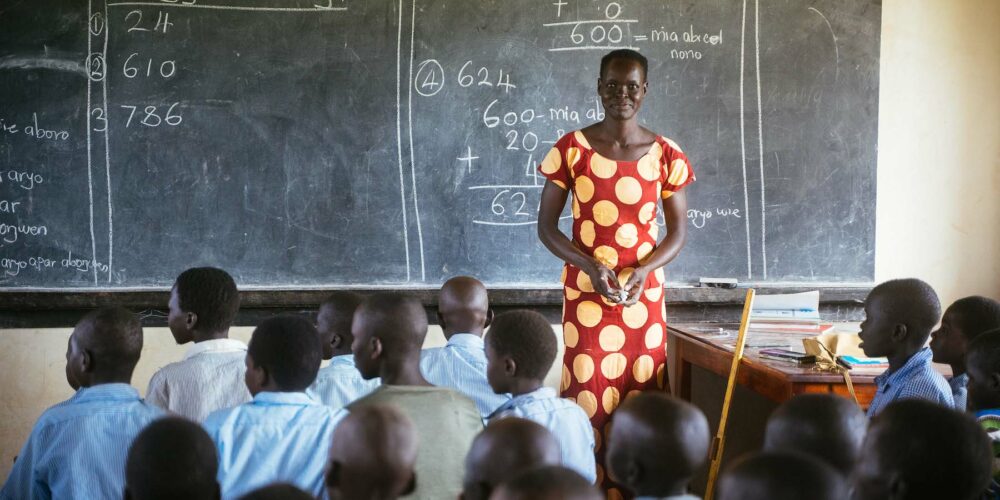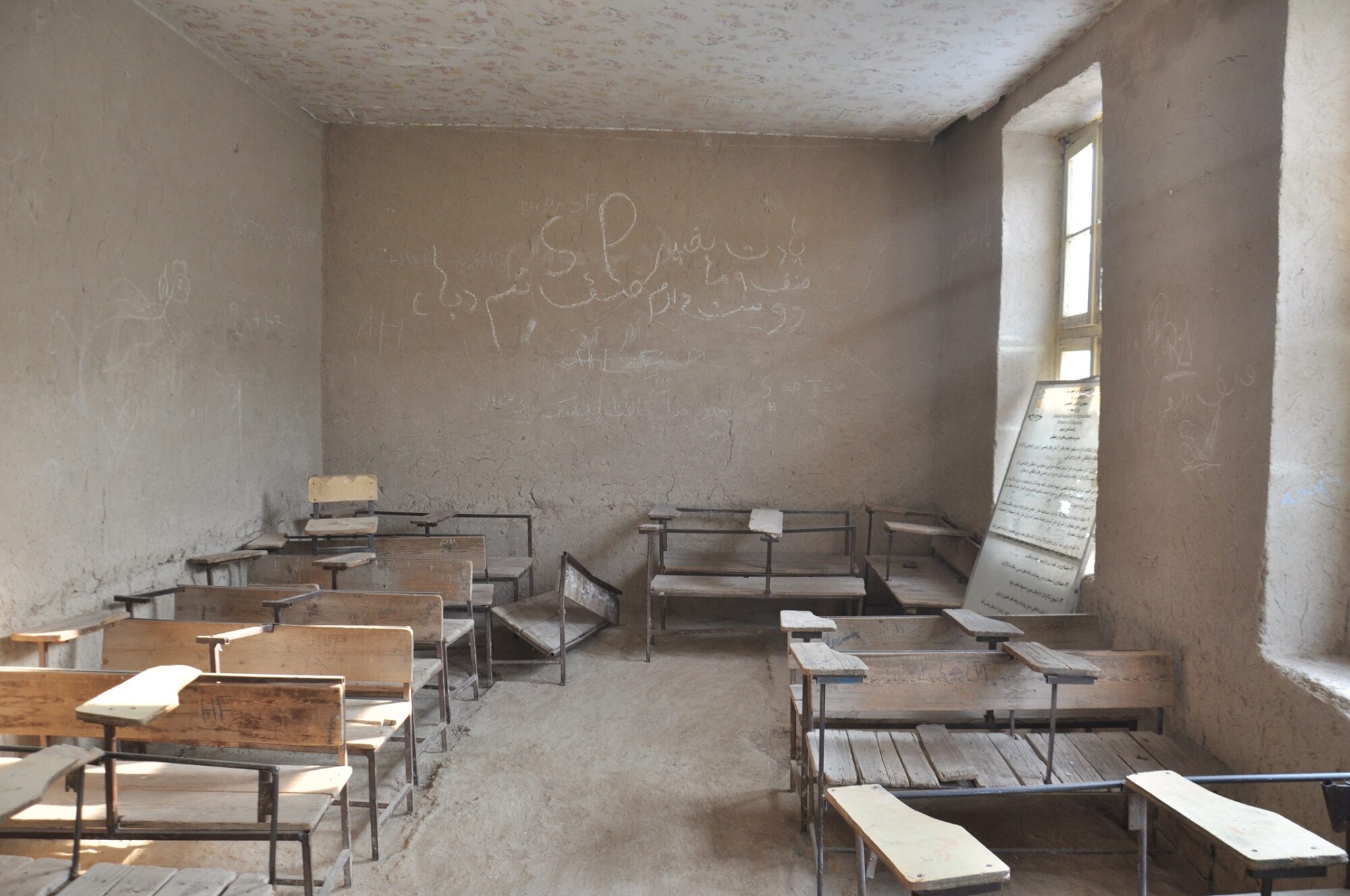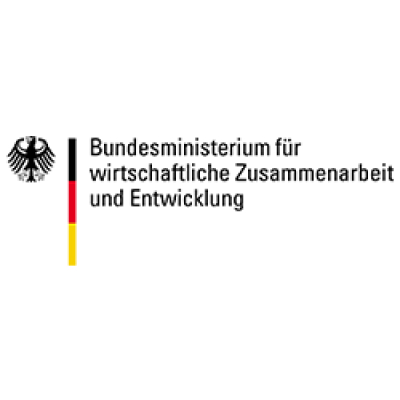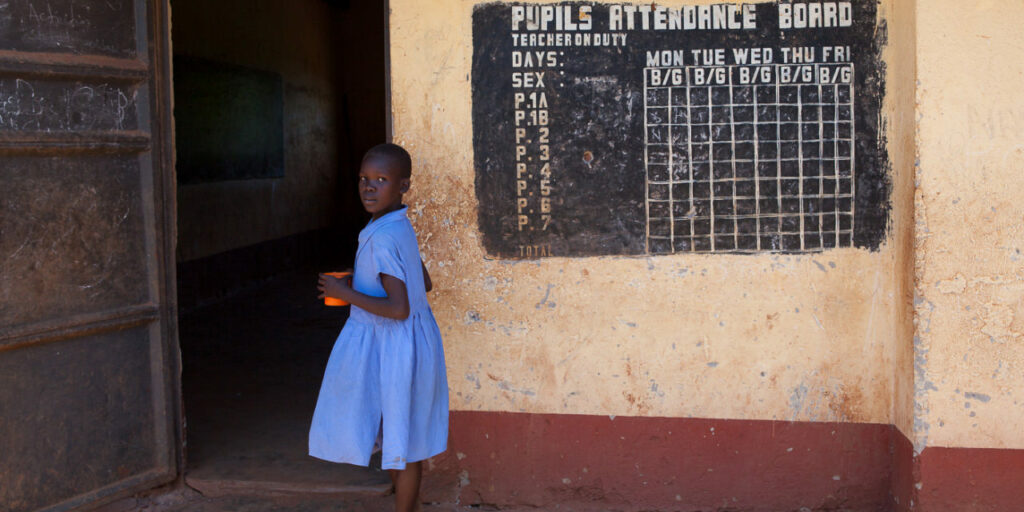
Nakibanga Primary School
Completed
Our second project school in the East African state of Uganda, Nakibanga Primary School, is located in central Uganda. The nine teachers at the public school offer free lessons to over 400 pupils. The school, which has existed since 1950, lacks classrooms, school equipment and, above all, sanitary facilities. That’s why we started building new latrines straight away in 2019 and created access to clean water in 2020 by installing a well with a hand pump. In order to prevent teachers from moving away, the next step was to plan the construction of teachers’ houses. The target group and our project partner are trained to sustainably strengthen local capacities.
INITIAL SITUATION
Uganda is a landlocked East African country bordering the crisis regions of South Sudan and the Democratic Republic of the Congo. In the south, Uganda borders Lake Victoria, the largest lake in Africa. The population is just under 35 million. The official languages are English and Swahili, but a total of over 40 different languages and dialects are spoken. Uganda’s history is marked by years of violent military dictatorship, which claimed hundreds of thousands of lives after the country’s decolonization and independence in the 1970s. The armed conflicts continued until 2006. In addition to the unrest, an HIV epidemic swept through the country in the 1980s, which continues to claim many lives to this day. The number of orphans in Uganda has risen dramatically since then. Almost a third of all orphans in Uganda are orphaned as a result of this epidemic.
Our new project school Nakibanga Primary School is located in central Uganda and is our second school project in Uganda after the St. John Bosco School in Katosi. The school is currently attended by 215 boys and 243 girls aged between 4 and 17. From preschool to seventh grade, three female teachers and six male teachers teach a total of 458 pupils. Nakibanga Primary School is a public school and therefore free of charge – it provides the often destitute children with the only access to education in a large area.
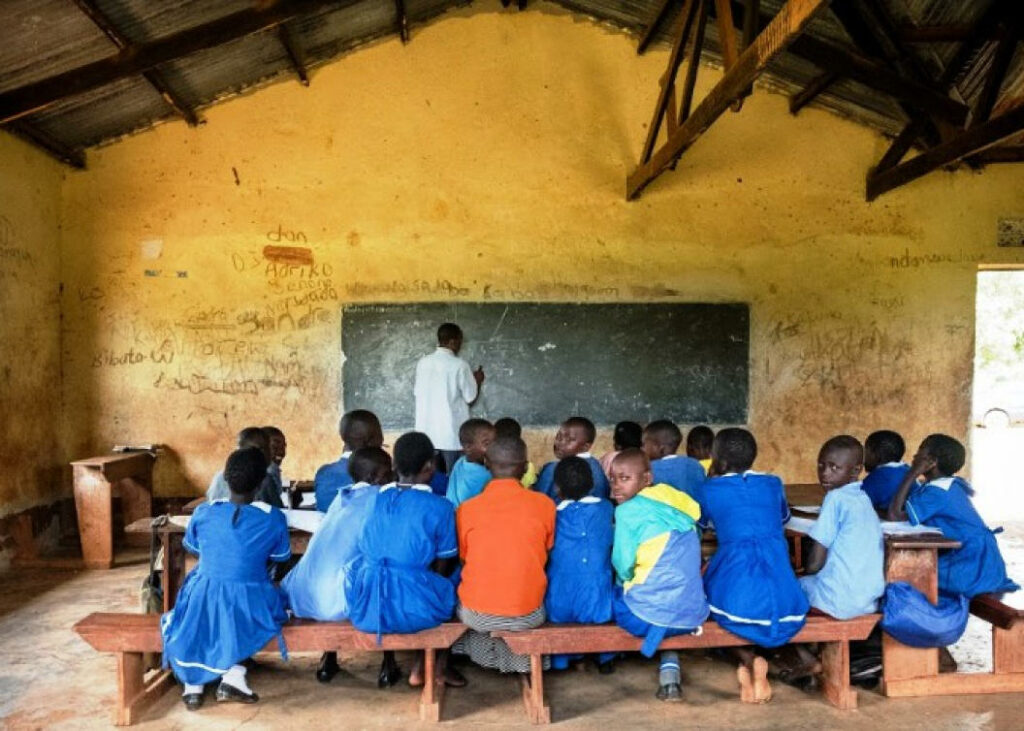
PROBLEM AND SOLUTION
The seven-hectare school site belongs to the church, which built and founded the school in 1950. Nevertheless, the school is non-denominational. When we took stock at the end of 2018, there were a total of three sparsely furnished class blocks, each with two to three classrooms, toilets, a kitchen and two teachers’ houses. All of the buildings were in a very dilapidated state, some of them even in danger of collapsing. As a result, lessons only took place in two of the three class blocks. This meant that two class levelshad to be taught in one room at the same time. In addition, Nakibanga Primary School lacked the necessary furniture, such as school desks, so that an appropriate and concentrated learning atmosphere could not prevail.
The sanitary facilities were also not in an acceptable condition: There was only one completely overloaded and unhygienic latrine for all pupils and teachers. This is particularly problematic for girls with regard to their menstruation. In addition to all these obstacles, access to clean water is very limited – there is no well at the school itself, so the children have to fetch water from the village well. This leads to the use of no water or unclean water, which causes pupils to fall ill more quickly.
Our project started in the first half of 2019 in cooperation with our local partner KIDA with the construction of two new gender-segregated latrine facilities with six cubicles each. In the course of the inauguration, WASH (Water, Sanitation and Hygiene) workshops were held by Viva con Agua Kampala, in which the children were taught about important hygiene rulesin a playful way. Building on this, we set up washrooms for girls in 2020 to provide them with the necessary hygiene facilities and privacy during their menstruation. The first step in gaining access to clean water was to take groundwater samples to find a suitable water source and then carry out the necessary construction work to gain access. In 2020, we were finally able to build a hand-operated fountain on the school grounds. At this point, special thanks also go to Viva con Agua de Sankt Pauli, who supported these sanitary measures.
Another problem we tackled was the inadequate classrooms, which were in danger of collapsing. Initially, the plan was to build only one new classroom building with three classrooms and to renovate two buildings. However, as it became clear during the renovation that it would be more economical to demolish and rebuild one of the buildings, two new buildings with three classrooms each were built and one building with two classrooms was renovated. They were completed in January 2020. In addition, all classrooms were equipped with new school furniture, as some of the old furniture was broken and no longer usable. We provided the school community with wooden beams, which they used to build new tables and benches themselves.
To counteractthe exodus of teachers due to long and difficult journeys to school, we also built teachers’ houses. The two gender-separated buildings were handed over to the school management in July 2020 in a small ceremony due to the coronavirus pandemic.
In October 2020, the employees of our local partner organization KIDA underwent further training. In a 5-day workshop on topics such as organizational management, team building and motivation as well as project management, the ten participants were able to take away a lot for their future work within the organization. After the schools reopened in spring 2021, we were able to organize our WASH and maintenance workshops on site for pupils, teachers, parents and the school management at the end of May/beginning of June. With the help of the WASH workshop, the participants were once again made aware of the importance of hygiene and the correct use of water, particularly in view of the global COVID-19 pandemic. Committees were set up within the maintenance workshops, which will continue to implement organized ways of maintaining the buildings and infrastructure in the long term.
All these measures can give Nakibanga Primary School new qualities for more focused learning – this works towards our primary goal of promoting quality learning in accordance with the fourth Sustainable Development Goal of the United Nations and thus guaranteeing learning success, especially the learning of basic skills.

WHAT HAS BEEN ACHIEVED SO FAR
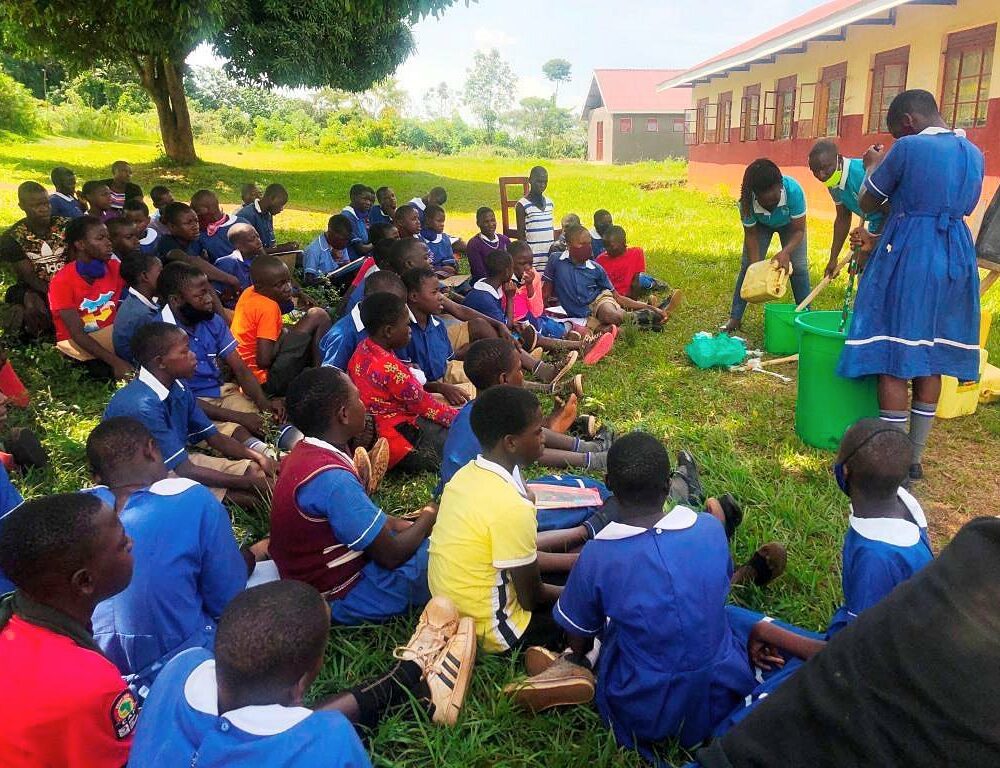
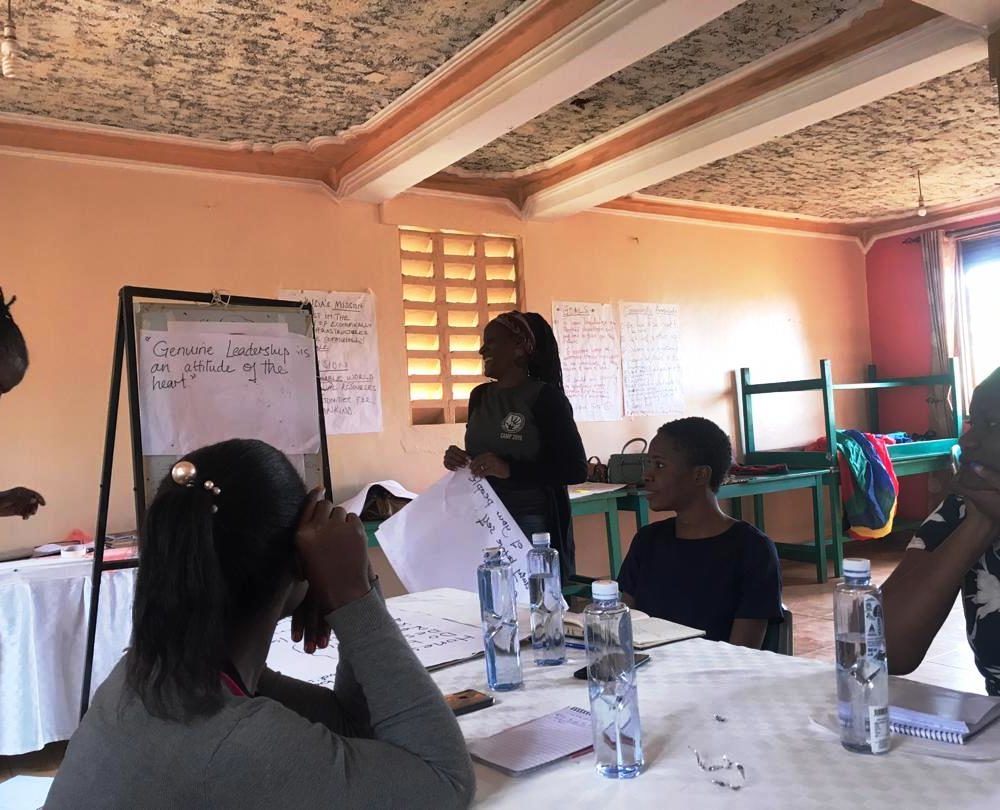

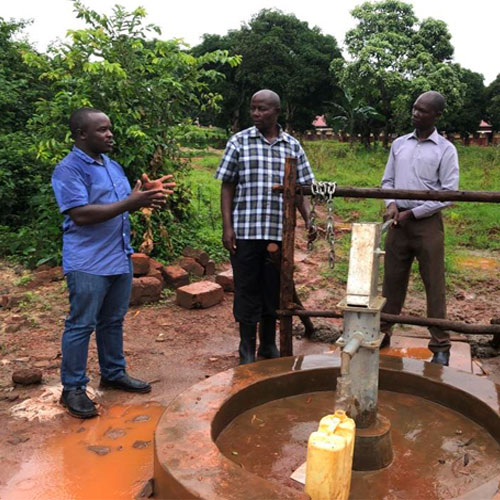
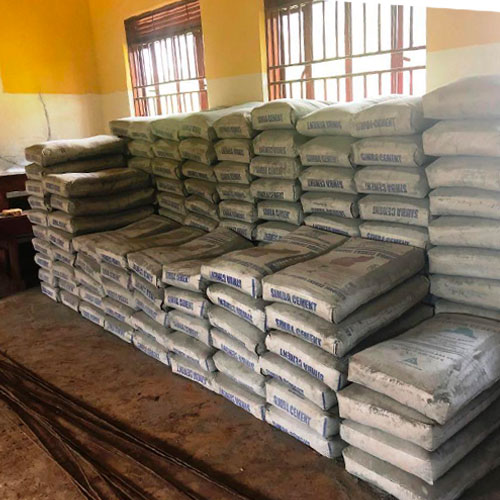

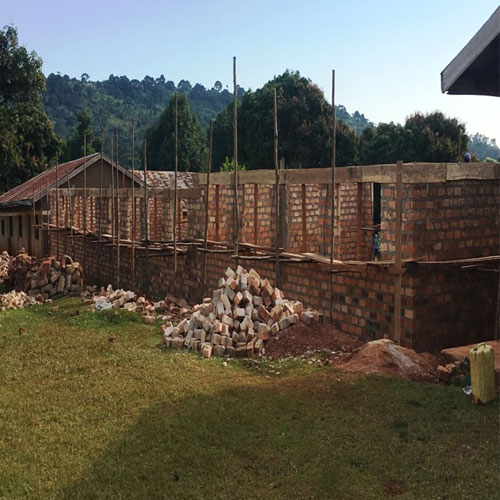


WASHING AND MAINTENANCE WORKSHOPS
After the schools opened in spring 2021, the WASH and maintenance workshops were finally able to take place at the end of May/beginning of June. The workshops were actually planned for 2020, but did not take place due to the school closures. This means that all planned measures at the school have now been completed. Since June 2021, schools have been closed again for at least 42 days.
FURTHER TRAINING IN THE KIDA-TEAM
Our local partner KIDA received five days of training on topics such as team management and motivation, organizational identity, leadership styles and project management. The ten participants were able to take a lot away from the workshops and make effective use of the time during the ongoing school closures.
COMPLETION OF WASHROOMS AND TEACHERS' HOUSES
The girls' washrooms and the teachers' houses have been completed. The teachers now have the opportunity to live close to the school. Ten washrooms, two of which are barrier-free, allow girls to wash hygienically during their periods. As soon as the corona restrictions allow, accompanying workshops on WASH and menstruation, as well as on the maintenance of the teachers' houses, are planned.
COMPLETION OF THE FOUNTAIN
Construction work on the washrooms and the teachers' houses started at the beginning of March. At the same time, the borehole for the well was drilled and the water pump installed. This meant that the well could be put into operation at the end of March and the water used to build the rooms.
PLANNING OF TEACHERS' HOUSES, WASHROOMS AND FOUNTAINS
At Nakibanga Primary School there are only a few and dilapidated teachers' quarters available. There is a risk of teachers leaving. The construction of the teachers' houses is intended to counteract this. The onset of menstruation is the main reason for girls to be absent from school. Hygienic washing facilities are irreplaceable. Which is why a building with ten washrooms was planned for the schoolgirls.
THREE CLASSROOM BUILDINGS COMPLETED AND FURNISHED
The safe and modern classroom buildings now offer enough space for around 500 pupils. The furniture rounds off the room atmosphere and gives the children a suitable place to learn.
START OF CONSTRUCTION WORK FOR TWO NEW CLASSROOM BUILDINGS
Initially, the renovation of two classroom buildings and the construction of a new building were planned. After the initial renovation work, however, it became clear that one of the buildings was so dilapidated that a new building proved to be the more economical option. The construction of two new classroom buildings was therefore begun.
OLD CREATES SPACE FOR NEW
The most dilapidated of the three class blocks was demolished. A new building will be constructed here in the next few months.
START OF CONSTRUCTION OF NEW SANITARY FACILITIES
Excavations have begun for two gender-segregated latrine facilities with six cubicles each. Groundwater samples were also taken to find a suitable water source.
